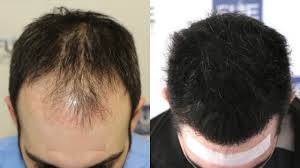After a hair transplant, it's important to choose a haircut that promotes proper healing and minimizes the risk of damaging the newly transplanted hair follicles. Here are some general guidelines to consider:
Avoid Short Haircuts Initially:
In the first few weeks after a hair transplant, it's advisable to avoid very short haircuts or shaving your head. The transplanted grafts need time to settle and become more firmly rooted in the scalp.
Gentle and Gradual Approach:
opt for a gentle and gradual approach to haircut styles. Start with longer lengths and gradually go shorter over time as the healing process progresses.
Consult with Your Surgeon:
Before getting a haircut, consult with your hair restoration surgeon in Islamabad. They can provide personalized advice based on your specific situation and the technique used for the transplant.
Avoid Traumatic Hairstyles:
Avoid hairstyles that put stress on the transplanted area, such as tight ponytails or braids. These can potentially damage the grafts and hinder the healing process.
Be Mindful of Scabbing:
If scabbing occurs during the healing process, avoid hairstyles that may disrupt or pull on the scabs. Gentle washing and care are essential during this period.
Wait for Full Healing:
It typically takes a few months for the transplanted hair to grow and fully integrate into the scalp. Wait until you have received clearance from your surgeon before considering more aggressive haircut styles.
Use Mild Hair Care Products:
Choose mild and gentle hair care products to avoid irritation to the scalp. Harsh chemicals in some hair products may be detrimental during the early stages of healing.
Consider Professional Advice:
Consult with a professional hairstylist who has experience working with individuals who have undergone hair transplants. They can offer guidance on suitable styles and maintenance.
Remember that individual recovery times may vary, and it's essential to follow the specific post-operative care instructions provided by your hair restoration surgeon in Peshawar. Always communicate with your surgeon about any concerns or questions you may have regarding your hair care routine and choice of haircut after a transplant.


.jpg)